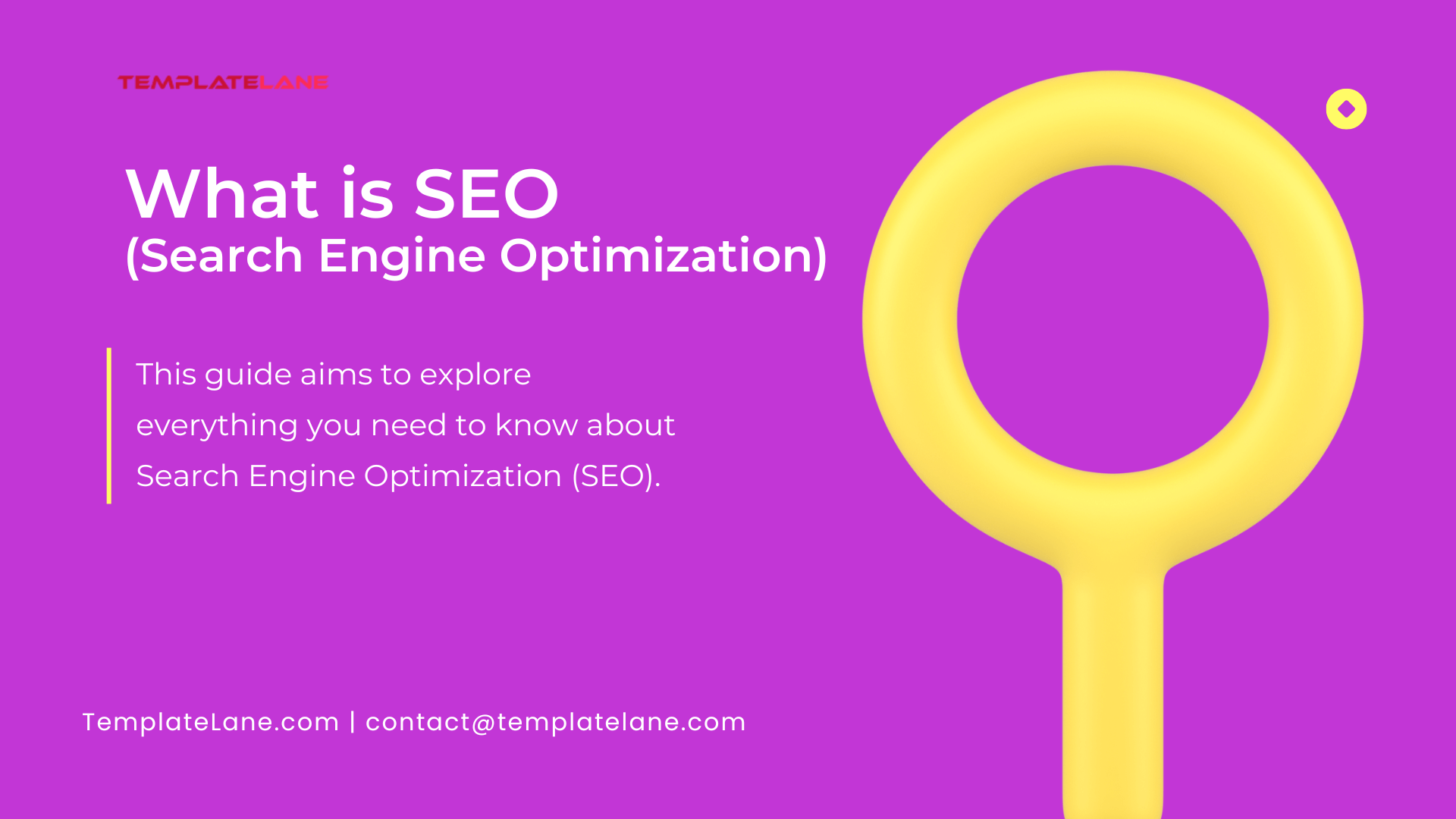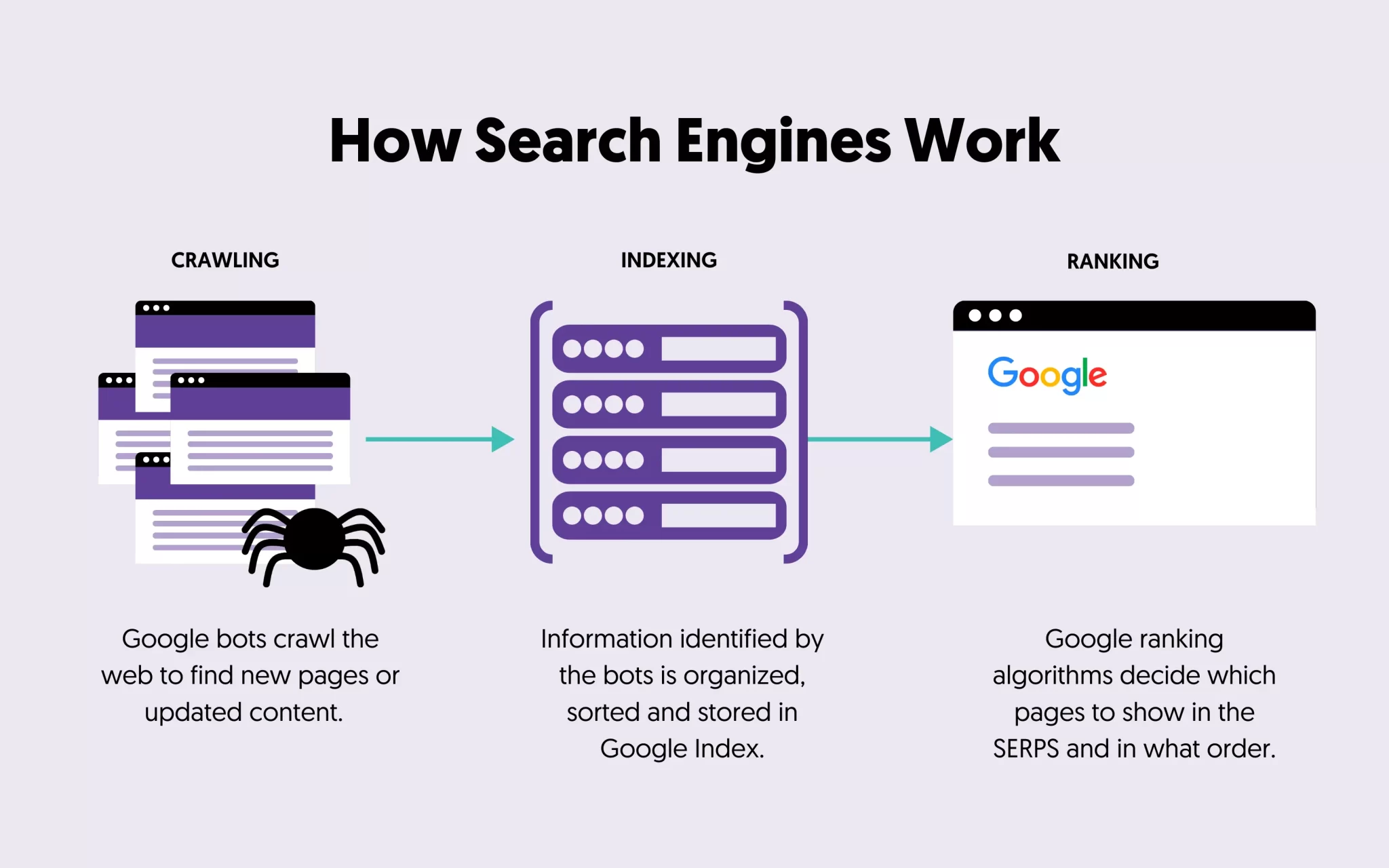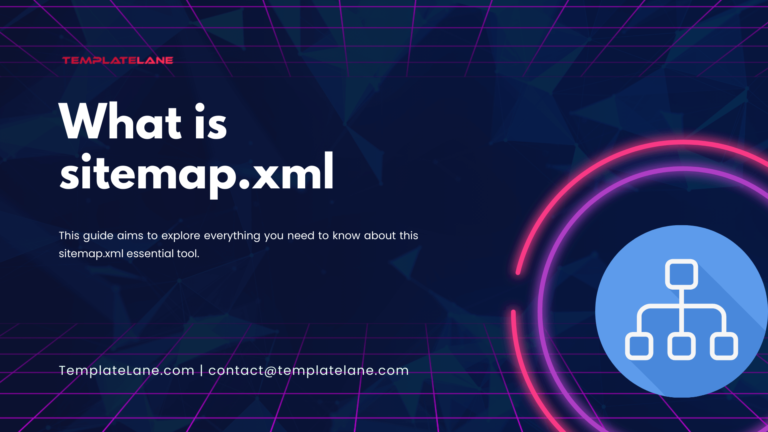Limited Time Offer 👉 Get 58% off Divi AI with the Divi Pro.
What is SEO (Search Engine Optimization)?

In today’s digital world, where competition for online visibility is fiercer than ever, Search Engine Optimization (SEO) has emerged as a crucial strategy for businesses and individuals aiming to make their mark. But what exactly is SEO, and why is it so important? This guide aims to explore everything you need to know about this essential tool.
Let’s dive in!
What is SEO?
SEO stands for Search Engine Optimization. It refers to the practice of optimizing a website or web page to improve its visibility in search engine results pages (SERPs) for relevant keywords and queries. By enhancing various aspects of your website—such as content quality, technical performance, and user experience—SEO helps your site rank higher on platforms like Google, Bing, and Yahoo.
At its core, SEO is about making your content more accessible and valuable to users and search engines. This involves understanding how search engines work, the kinds of content people seek, and the specific terms they use to find it.
How Search Engines Work

Search engines like Google use complex algorithms to index, rank, and retrieve information from billions of web pages. These algorithms analyze various factors to determine which pages best match a user’s search query. The three primary processes involved are:
- Crawling:
- Search engine bots, known as crawlers or spiders, scan the internet to find new or updated content.
- Indexing:
- The crawled data is stored and organized in the search engine’s database, known as an index.
- Ranking:
- When a user enters a query, the search engine retrieves the most relevant pages from its index and displays them in order of relevance and authority.
Key Components of SEO
- On-Page SEO: This involves optimizing individual pages to improve their relevance and quality. Key aspects include:
- Keyword Research: Identifying the search terms your target audience uses.
- Content Optimization: Creating high-quality, informative, and engaging content that incorporates these keywords naturally.
- Meta Tags: Writing compelling titles, descriptions, and headers that reflect the content and keywords.
- URL Structure: Using clean, descriptive URLs that are easy for users and search engines to understand.
- Off-Page SEO: Off-page SEO focuses on building your site’s authority and reputation through external factors, such as:
- Backlinks: Earning high-quality links from reputable websites.
- Social Signals: Encouraging shares and mentions of your content on social media platforms.
- Brand Mentions: Gaining visibility through discussions and citations across the web.
- Technical SEO: This involves optimizing the backend aspects of your website to improve its performance and accessibility, including:
- Site Speed: Ensuring your pages load quickly.
- Mobile-Friendliness: Designing a responsive site that works well on all devices.
- Secure Connections: Implementing HTTPS to protect user data.
- Structured Data: Using schema markup to help search engines understand your content.
- Local SEO: Local SEO is aimed at optimizing your online presence to attract more business from relevant local searches. This type of SEO is crucial for brick-and-mortar businesses looking to drive foot traffic and local leads. By focusing on local SEO, you can ensure that your business appears in local search results, making it easier for potential customers to find and visit your location.
Types of SEO:
SEO can be categorized into three main types, each with a unique focus:
- White Hat SEO: Ethical techniques that follow search engine guidelines, such as high-quality content and natural link-building.
- Black Hat SEO: Unethical practices that attempt to manipulate rankings, such as keyword stuffing or buying links (not recommended).
- Gray Hat SEO: Techniques that fall between ethical and unethical, often riskier than white hat strategies.
Why is SEO Important?
- Increased Visibility and Traffic:
- SEO ensures your content ranks higher on search engine results pages (SERPs), driving organic traffic and exposing your brand to a broader audience.
- Builds Credibility:
- Higher rankings lend your site credibility and authority in your niche, as users often trust search engines to present the best options.
- Enhances User Experience:
- SEO-friendly sites are often easier to navigate, load faster, and provide valuable content to users, which also improves conversion rates.
- Cost-Effectivenes:
- Unlike paid advertising, organic traffic generated by SEO doesn’t cost per click, making it a sustainable long-term strategy.
- Competitive Edge:
- With a strong SEO strategy, you can outrank competitors and capture a larger share of your market.
Best SEO Practices
To achieve success in SEO, consider these best practices:
- Keyword Research:
- Understand Your Audience: Research what terms your target audience searches for.
- Use Tools: Leverage tools like Google Keyword Planner, Ahrefs, or SEMrush to find high-volume, low-competition keywords.
- Long-Tail Keywords: Focus on specific long-tail keywords to attract targeted traffic.
- Intent Matching: Choose keywords that align with the user’s intent (informational, navigational, or transactional).
- On-Page SEO:
- Content Optimization:
- High-Quality Content: Create original, engaging, and valuable content that addresses user needs.
- Keyword Placement: Include primary and secondary keywords naturally in titles, headings, URLs, and throughout the content.
- Content-Length: Longer, in-depth articles often rank better, but ensure they remain relevant.
- Multimedia: Use images, videos, infographics, and other media to enrich the content.
- HTML Optimization:
- Title Tags: Include the primary keyword and keep it under 60 characters.
- Meta Descriptions: Write compelling meta descriptions under 155 characters, including target keywords.
- Header Tags (H1-H6): Structure your content with hierarchical headings, using H1 for the main title and H2-H6 for subheadings.
- Alt Text: Add descriptive alt text to images for accessibility and SEO.
- Internal Linking:
- Link Depth: Ensure important pages are no more than three clicks away from the homepage.
- Anchor Text: Use descriptive anchor text that includes keywords.
- URL Structure:
- Readable URLs: Keep URLs short, descriptive, and keyword-rich.
- Avoid Parameters: Use static URLs rather than dynamic ones with excessive parameters.
- Content Optimization:
- Technical SEO:
- Website Speed:
- Optimize Images: Compress and resize images.
- Minify Code: Remove unnecessary characters from HTML, CSS, and JavaScript.
- Enable Caching: Use browser and server-side caching.
- Content Delivery Network (CDN): Distribute content through a CDN for faster loading globally.
- Mobile-Friendliness:
- Responsive Design: Ensure your site is responsive and provides a good experience on all devices.
- Mobile Speed: Optimize specifically for mobile load speeds.
- Crawlability and Indexability:
- Robots.txt: Configure robots.txt to guide search engine crawlers.
- XML Sitemap: Submit an updated sitemap to Google Search Console.
- Canonical Tags: Use canonical tags to prevent duplicate content issues.
- HTTPS:
- Use SSL/TLS to secure your site with HTTPS, which is a ranking factor.
- Website Speed:
- Off-Page SEO:
- Backlinks:
- Quality over Quantity: Focus on acquiring backlinks from authoritative, relevant sites.
- Guest Posting: Write guest posts for reputable blogs in your niche.
- Broken Link Building: Find and replace broken links on other sites with your content.
- Social Media:
- Share content on social platforms to drive traffic and generate backlinks.
- Engage with your audience to increase brand visibility.
- Backlinks:
- User Experience (UX):
- Ease of Navigation: Use intuitive menus and internal links.
- Clear CTAs: Make calls-to-action prominent and compelling.
- Reduce Bounce Rate: Offer engaging and relevant content to retain visitors.
- Local SEO (if applicable):
- Google My Business (GMB): Claim and optimize your GMB listing.
- NAP Consistency: Ensure your Name, Address, and Phone number are consistent across all platforms.
- Local Keywords: Use geo-targeted keywords.
- Analytics and Continuous Improvement:
- Google Analytics: Track traffic, user behavior, and conversion rates.
- Search Console: Monitor performance and resolve crawl errors.
- A/B Testing: Experiment with titles, layouts, and CTAs to improve results.
- Content Updates:
- Regularly update and refresh content to maintain relevance.
- Audit old posts for outdated information or broken links.
Common SEO Challenges
SEO (Search Engine Optimization) is essential for driving organic traffic to a website, but it comes with its share of challenges. Here’s a detailed breakdown of common SEO challenges and how to address them:
- Staying Updated with Search Engine Algorithm Changes:
- Challenge:
- Search engines, especially Google, frequently update their algorithms. These changes can significantly impact website rankings without prior warning.
- Solution:
- Stay informed by following authoritative sources like Google’s Search Central Blog.
- Regularly review your website’s analytics to identify sudden changes in traffic patterns.
- Focus on creating high-quality, user-focused content that aligns with search intent, as this approach is less vulnerable to algorithm changes.
- Challenge:
- Managing Technical SEO:
- Challenge:
- Issues like crawl errors, broken links, slow loading times, and improper use of robots.txt or sitemap files can hurt rankings.
- Solution:
- Use tools like Google Search Console, Screaming Frog, and Ahrefs to identify and fix technical issues.
- Ensure your website is mobile-friendly, fast, and has a secure HTTPS protocol.
- Conduct regular audits to maintain technical SEO health.
- Challenge:
- Competition in High-Density Niches:
- Challenge:
- Competing against well-established websites in saturated niches can make it difficult to rank for competitive keywords.
- Solution:
- Identify and target long-tail keywords that are less competitive but highly relevant.
- Build domain authority through quality backlinks and partnerships.
- Focus on creating unique, valuable content that fills gaps not covered by competitors.
- Challenge:
- Creating and Optimizing Quality Content:
- Challenge:
- Producing content that is both engaging for users and optimized for search engines is a delicate balance.
- Solution:
- Perform keyword research using tools like SEMrush or Google Keyword Planner.
- Structure content with proper headings, subheadings, and meta descriptions.
- Regularly update old content to maintain relevance and accuracy.
- Challenge:
- Building and Maintaining Backlinks:
- Challenge:
- Acquiring high-quality backlinks is time-consuming, and spammy or low-quality links can harm your SEO.
- Solution:
- Focus on natural link-building through guest posts, collaborations, and content marketing.
- Monitor your backlink profile with tools like Ahrefs or Moz to disavow harmful links.
- Create shareable assets such as infographics or research studies.
- Challenge:
- Handling Duplicate Content:
- Challenge:
- Duplicate content confuses search engines and can lead to lower rankings.
- Use canonical tags to indicate the preferred version of a page.
Avoid duplicate meta tags and descriptions.
Regularly check for plagiarism or duplication using tools like Copyscape.
- Solution:
- Use canonical tags to indicate the preferred version of a page.
- Avoid duplicate meta tags and descriptions.
- Regularly check for plagiarism or duplication using tools like Copyscape.
- Challenge:
- Local SEO Challenges:
- Challenge:
- For businesses with physical locations, optimizing for local search requires additional efforts, like managing Google My Business listings.
- Solution:
- Optimize Google My Business by keeping information accurate and complete.
- Use local keywords and create location-specific landing pages.
- Encourage customer reviews to improve credibility and visibility.
- Challenge:
- Measuring SEO ROI:
- Challenge:
- Demonstrating the return on investment (ROI) from SEO efforts can be difficult because results take time.
- Solution:
- Define clear KPIs such as organic traffic, conversion rates, and ranking improvements.
- Use tools like Google Analytics to track performance and attribution.
- Regularly report and adjust strategies based on measurable outcomes.
- Challenge:
- Mobile-First Indexing:
- Challenge:
- Search engines prioritize mobile-friendly websites, and sites that don’t perform well on mobile devices suffer in rankings.
- Solution:
- Implement responsive design to ensure a seamless mobile experience.
- Test your site’s mobile-friendliness using Google’s Mobile-Friendly Test tool.
- Optimize page speed, visuals, and navigation for mobile users.
- Challenge:
- Keeping Up with Evolving User Intent:
- Challenge:
- Search engine users’ expectations and behaviors constantly evolve, and outdated content may no longer meet their needs.
- Solution:
- Regularly analyze search intent behind targeted keywords.
- Update content to address changing questions and needs.
- Use AI-driven tools to predict trends and adapt your strategy accordingly.
- Challenge:
- Balancing On-Page and Off-Page SEO:
- Challenge:
- While both are critical, focusing too much on one can lead to an unbalanced SEO strategy.
- Solution:
- Optimize on-page elements like titles, headers, and internal links.
- Simultaneously invest in off-page efforts, including social signals and backlinking.
- Periodically audit your overall SEO strategy to ensure balance.
- Challenge:
- Avoiding Over-Optimization:
- Challenge:
- Keyword stuffing or over-optimization can lead to penalties rather than benefits.
- Solution:
- Use keywords naturally and strategically without forcing them into the content.
- Focus on readability and user engagement rather than just keyword density.
- Stay within Google’s webmaster guidelines to avoid penalties.
- Challenge:
Advanced SEO Strategies
- Voice Search Optimization:
- Focus on long-tail keywords and natural language queries, as people use conversational tones in voice searches.
- Create concise, question-based content to cater to voice assistants like Alexa, Google Assistant, or Siri.
- Optimize for local searches, as voice queries often include “near me” phrases.
- E-A-T Principles:
- Emphasize Expertise, Authoritativeness, and Trustworthiness in your content to align with Google’s quality standards.
- Use credible sources, include author bios, and provide external links to authoritative references.
- Schema Markup:
- Add structured data to your site for rich snippets like FAQs, reviews, and product details. This enhances your visibility and click-through rates.
- Use tools like Google’s Structured Data Testing Tool to validate your markup.
- Content Clusters:
- Group related content into clusters around a central “pillar page” for improved topic authority and better user experience.
- For example, a travel website might create a pillar page about “Europe Travel” and link to cluster pages covering specific countries or itineraries.
- User Intent Targeting:
- Optimize content for different types of queries:
- Informational: Users seeking knowledge or answers.
- Navigational: Users looking for a specific website or page.
- Transactional: Users ready to make a purchase or complete an action.
- Align your content structure and calls-to-action (CTAs) with these intents.
- Utilize heatmaps to understand user behavior and refine content strategies.
- Optimize content for different types of queries:
- Video SEO:
- Optimize video content by adding captions, transcripts, and descriptive metadata.
- Host videos on platforms like YouTube and embed them on your site to drive traffic from multiple sources.
- AI and Automation Tools:
- Optimize video content by adding captions, transcripts, and descriptive metadata.
- Host videos on platforms like YouTube and embed them on your site to drive traffic from multiple sources.
Common SEO Mistakes to Avoid
- Keyword Stuffing: Overloading content with keywords not only harms readability but can also lead to penalties from search engines.
- Duplicate Content: Unique content is crucial for avoiding penalties and ensuring each page has a distinct purpose.
- Ignoring Analytics: Regularly monitor your SEO performance using tools like Google Analytics and Google Search Console to make data-driven decisions.
- Neglecting Mobile Users: With mobile-first indexing, a site that isn’t mobile-friendly can see a significant drop in rankings.
- Overlooking Local SEO: Optimize for local search by claiming your Google My Business profile, gathering reviews, and including local keywords.
- Poor Content Quality: Thin or low-value content can hurt rankings. Focus on creating in-depth, engaging, and well-researched content.
- Broken Links: Regularly check for and fix broken links that can frustrate users and reduce your credibility.
- Skipping Regular Audits: Conduct regular SEO audits to identify and fix issues before they impact rankings.
Emerging Trends in SEO
- AI and Machine Learning:
- Google’s RankBrain and other AI-driven algorithms prioritize user satisfaction. Focus on user experience and engagement metrics like dwell time.
- AI tools can also help with content creation, keyword research, and optimization.
- Core Web Vitals:
- Metrics like LCP (Largest Contentful Paint), FID (First Input Delay), and CLS (Cumulative Layout Shift) impact rankings. Regularly audit your site to ensure compliance.
- Video Content Optimization:
- Platforms like YouTube are becoming critical for visibility. Optimize titles, descriptions, and thumbnails, and include transcripts for better accessibility.
- Use video schema markup to make your content eligible for video snippets in search results.
- Zero-Click Searches:
- Aim for featured snippets, knowledge panels, and “People Also Ask” boxes to capture attention without clicks. Format content with bullet points, tables, and short paragraphs for better chances.
- Sustainability and Ethics:
- Ethical practices and eco-friendly hosting are becoming more influential in branding and SEO. Highlight your efforts towards sustainability to attract conscious consumers.
- Interactive Content:
- Incorporate quizzes, polls, calculators, and interactive infographics to boost engagement and shareability.
How to Measure SEO Success
- Organic Traffic: Use analytics tools to track visitor growth and identify high-performing pages.
- Bounce Rate: Lower bounce rates indicate user engagement and relevance of content.
- Domain Authority: Measure your site’s authority using Keyword Research Tools tools like Moz, Ahrefs, or SEMrush.
- Keyword Rankings: Monitor changes in SERP positions for targeted keywords.
- Conversion Rates: Evaluate how effectively traffic translates into sales, sign-ups, or other desired actions.
- Engagement Metrics: Track time on page, pages per session, and social shares to gauge content quality.
Conclusion
SEO is a dynamic and multifaceted discipline that requires continual learning and adaptation. By focusing on quality content, technical excellence, and user satisfaction, you can create a robust SEO strategy that drives traffic, builds credibility, and boosts your bottom line. Whether you’re a beginner or an advanced practitioner, staying updated with the latest trends and best practices will keep you ahead in the competitive digital landscape.
Remember, SEO is not a one-time effort but an ongoing process. Invest the time and resources to understand your audience, refine your strategies, and align with search engine algorithms to achieve long-term success.







